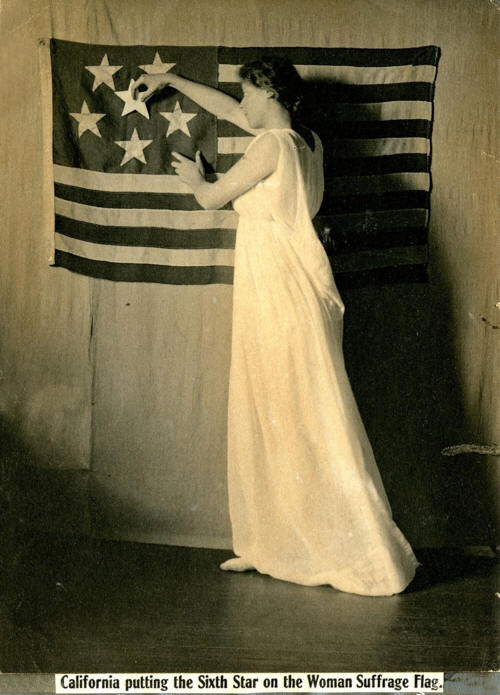This 48 star medallion
pattern flag,
IAS-00002, is one of the
earliest acquisitions of the
Rare Flags collection.
Until recently, the purpose
for the unusual pattern on
the reverse of the flag was
a mystery. The flag
surfaced in Ohio, but its
specific history and maker
was lost over time.
The spectacular medallion on
the front of the flag makes
the flag one of the most
unique examples of
the 48 star count.
Originally, I wondered
whether the flag maker had
simply run out of fabric for
the stars on the reverse
and opted for a simpler
pattern. But in
retrospect, after years of
collecting, I've learned
that the traits of early
flags are very seldom
unintentional. Great
care went into making flags,
and while at some times and
places in history fabric may
have been scarce, a flag
maker who puts such time and
effort into a flag such as
this one will have the
materials they need to make
the design they intend to
make. In the case of
this flag, the reverse of
the flag is very precisely
planned and executed.
For example, the stars are
very accurately sized and
stitched, with the a tip of
each of the five outer stars
pointing directly to one of
the tips of the large
central star. The
pattern is clear and
intentional.
 It
was only after happening
upon a postcard photo in the
Smithsonian collection that
the symbolic meaning of the
pattern became
plainly obvious. The
postcard, dated 1911, shows
a suffragette adding a sixth
star to the Women's Suffrage
Flag. Debate on the
floor of Congress against
the Women's Suffrage
movement makes mention of
the adoption of the American
flag for the movement's
purposes, and this postcard
is evidence of the practice. It
was only after happening
upon a postcard photo in the
Smithsonian collection that
the symbolic meaning of the
pattern became
plainly obvious. The
postcard, dated 1911, shows
a suffragette adding a sixth
star to the Women's Suffrage
Flag. Debate on the
floor of Congress against
the Women's Suffrage
movement makes mention of
the adoption of the American
flag for the movement's
purposes, and this postcard
is evidence of the practice.
Wyoming, Utah,
Washington, Colorado and
Idaho were the first five
states to grant women the
right to vote, the last
being Idaho in 1896.
From 1896 to 1911, though,
the movement seemed to
stall, with no additional
states granting suffrage
rights to women.
Vigorous campaigns in
California, Ohio, and other
states tried to push
state-level legislation
through on the issue.
In November, 1911,
California became the sixth
state to grant women's
suffrage, and in 1912, the
western states of Oregon,
Montana, Arizona followed
suit.
The addition of the
California's "sixth star" to
the women's suffrage flags,
banners and pin-backs in the
1911-1912 period, was an
important symbolic milestone
for the movement. The
"six-star" flag also happens
to coincide precisely with
the introduction of the 48
star flag. New Mexico,
47, entered the Union on
January 6, 1912, and
Arizona, 48, entered the
Union on February 14, 1912,
just 2 months after
California granted women the
right to vote. On
November 5, 1912, Arizona
granted women the right to
vote, which means that this
flag, made to celebrate both
Arizona Statehood and
California's Suffrage vote,
dates from the period of
February-November 1912.
It has always been my
opinion that this flag was a
very early 48 star flag,
since its extravagant
medallion pattern doesn't
conform to President Taft's
executive order of June 12,
1912, which declared that
flags henceforth should be
standardized to a pattern of
6 even rows of 8 stars.
This also narrows the date
of this flag to the first
half of 1912. This
flag is the only surviving
Women's Suffrage flag in the
Stars and Stripes pattern
that I am aware of. As
such, it is a true national
treasure and symbol of
American progress. |

